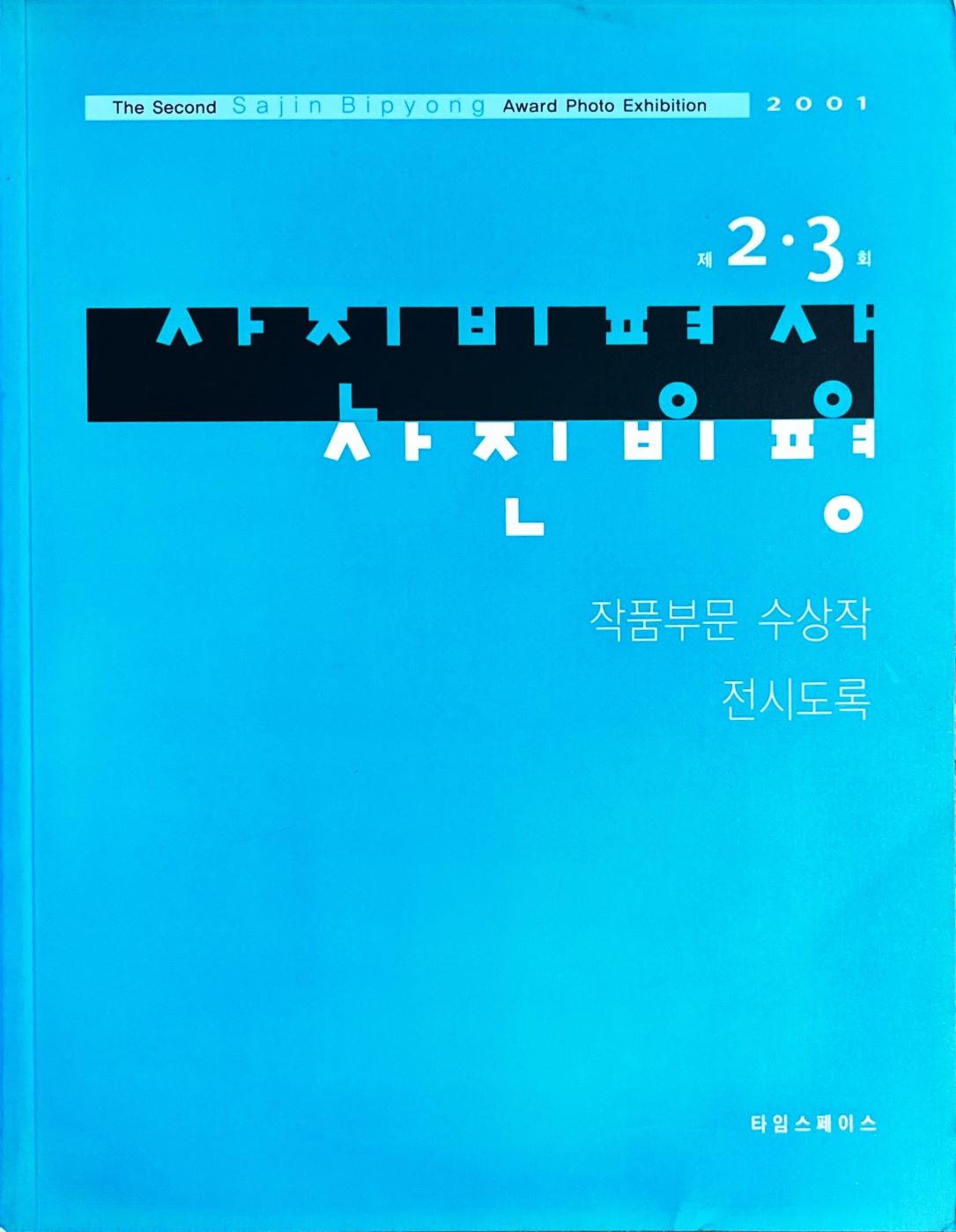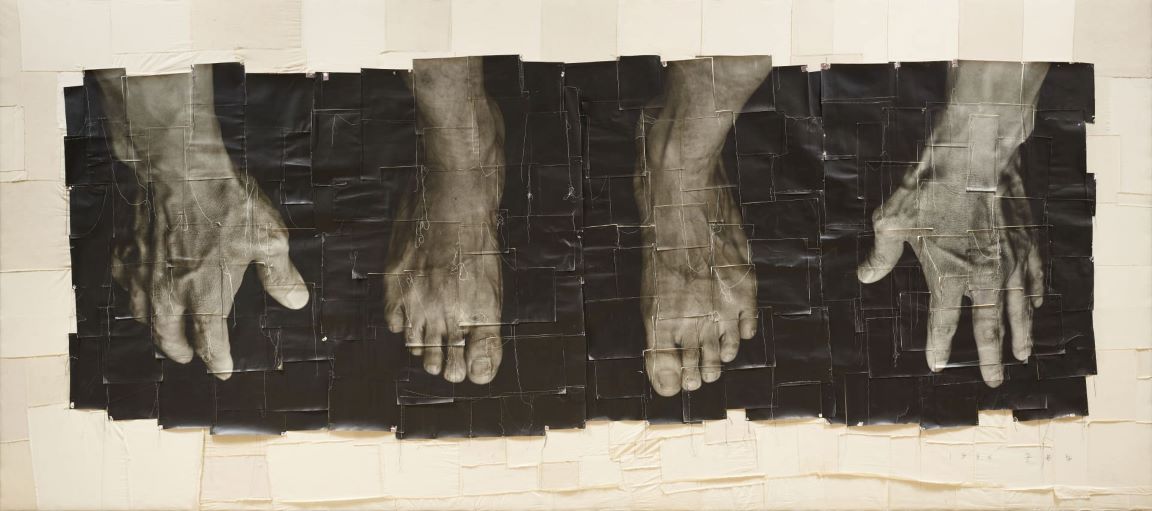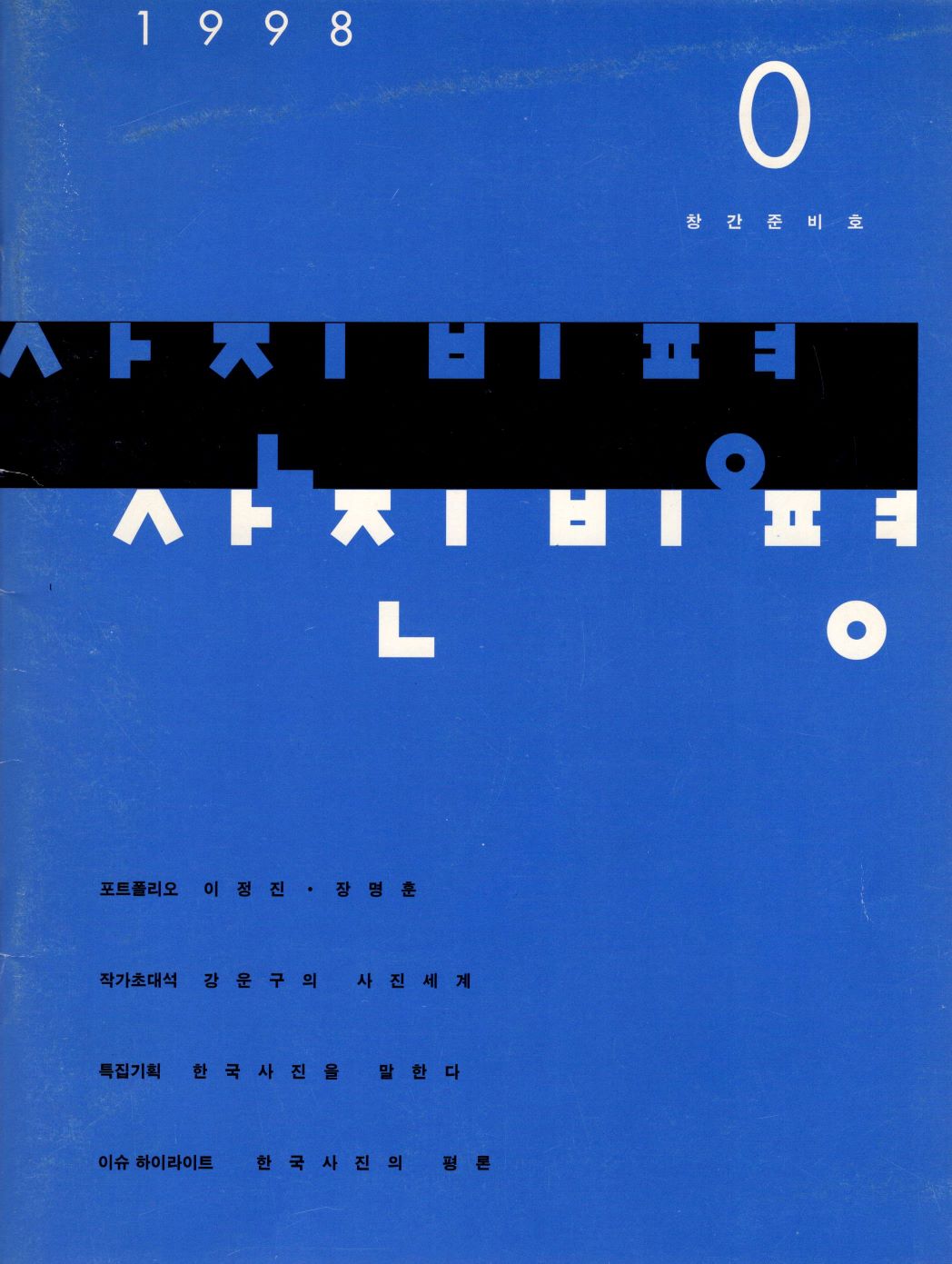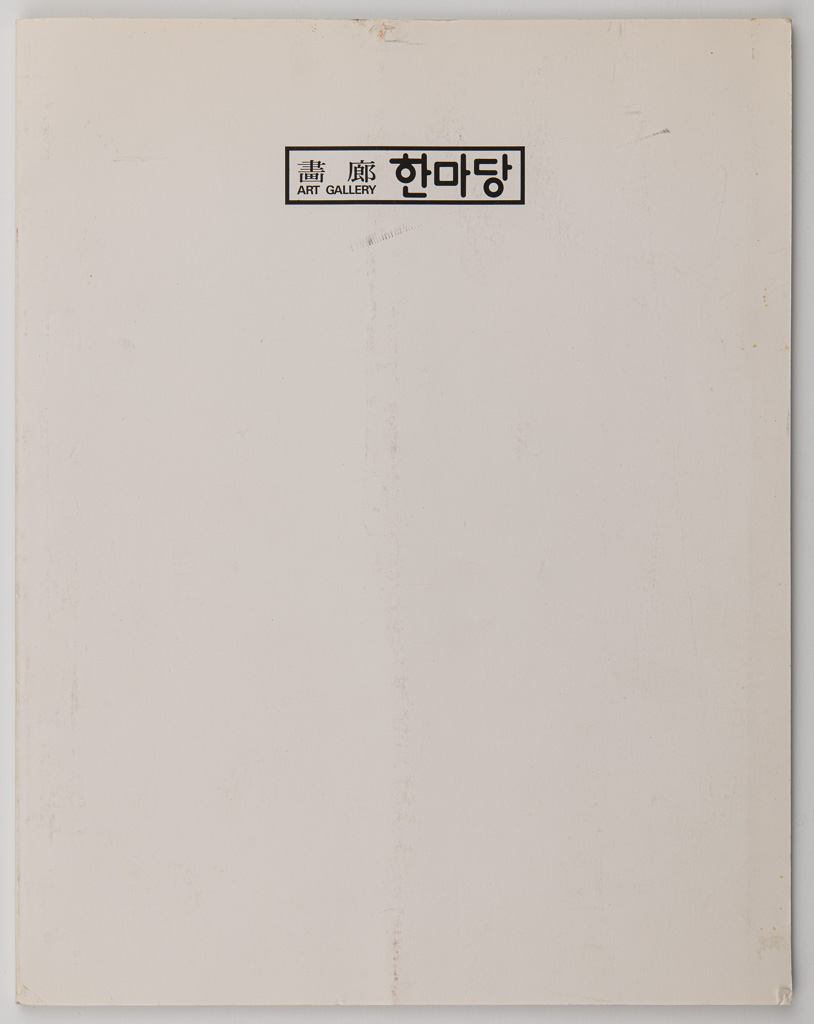
The Second Sajin Bipyong Award Photo Exhibition, Brochure, 2001, MMCA Digital Archive, Gift of Gwon Osang
Timespace
* Source: Multilingual Glossary of Korean Art. Korea Arts Management Service
Related
-

Contemporary photography
Contemporary photography differs from a modernist approach to photography that highlighted the technical qualities of the image. Robert Frank’s photograph collection The American published in 1959, is considered a turning point in indicating a new style based on idiosyncratically cropped images and unusual focus. Contemporary photography became prevalent when conceptual art emerged between the 1960s and the 1970s. The New Wave of the Photography exhibition, which opened at the Walker Hill Art Center in Seoul on May 18th, 1988, is considered as marking the starting point of Korean contemporary photography. The Horizon of Korean Photography exhibition at the Total Museum of Contemporary Art in Jangheung, Gyeonggi-do in November 1991 provided a further turning point. The founding of galleries specializing in photography, including the Timespace, Pine Hill Gallery, and Hanmadang Gallery, has also contributed greatly to the popularity of contemporary photography in Korea. Over the last 30 years, many foreign-educated photographers like Koo Bohnchang, Kim Daesoo, Lee Juyong, Lim Youngkyun, Han Okran, and Choi Kwangho have returned to Korea and released works reflecting new trends in the medium and further enhancing its national status as a contemporary art form.
-

Sajin Bipyung
Sajin Bipyung was a quarterly journal of photographic criticism and theory, published in 1998 by Im Hyangja. Starting with its inaugural fall issue, 13 issues were published until 2003 by the publishing company Timespace in Chungmuro, Seoul. Kim Seunggon was an editor-in-chief, and Lee Kyungmin served as a member of the editorial committee. In the late 1990s, Korean photography culture developed substantively, and photography came to be considered as art. As a result, there was a call for the establishment of a self-sustaining critical culture in the photography industry. Therefore, Sajin Bipyung can be evaluated as a professional magazine founded with the aim of creating a culture of criticism of Korean photography and actively introducing critical writing to establish a photography forum. It was composed of articles about special topics, exhibitions, introduction to artists’ portfolios, highlights discussing timely critical topics, interviews of artists and their works, ideas, and philosophy, exhibition reviews, and an information section. It also promoted and supported emerging critics by selecting the Photo Criticism Award every year and sought to promote photo criticism by publishing awarded works in the paper.
Find More
-

Hanmadang Gallery
Hanmadang Gallery, specializing in photography, was opened by Jang Yanghwan, a photographer from the Sookmihoe photography club of Sookmyung Women’s University, in October 1983 in Junghak-dong, Jongro-gu, Seoul. It held special and permanent exhibitions on photography and rented its space for artworks without distinction of genre. Before the 1980s, photography exhibitions were held only at limited spaces like the Cultural Center of Publishers Association, the Center of the Federation of Artistic and Cultural Organization of Korea, and the Press Center of Korea. Since national and public art museums rarely hosted photography exhibitions even in the 1980s, there was an absolute lack of space for artists in the art photography field to showcase their works. One of the first galleries specializing in photography that emerged in the 1980s, Hanmadang Gallery contributed to the development of Korean photography by introducing contemporaneous art photographs and hosting special exhibitions. Ten Renowned Korean Photographers was held in 1983 in commemoration of the opening of the gallery. In 1985, the gallery organized Female Photographers that featured works by female photographers whose number was gradually growing. It also introduced early works by notable photographers by holding their solo exhibitions such as Twelve Sighs for Koo Bohnchang in 1985 and Image of the City for Lee Gapchul in 1986.
-

Pine Hill Gallery
Pine Hill Gallery, specializing in photography, opened in February 1981 in Gwancheol-dong, Jongro-gu, Seoul. The architect Cho Sung-lyul served as president. At the time of its opening, it was named Grand Bear Gallery, but it was renamed in December 1982. After expanding its exhibition space, the gallery reopened in March 1991 in the same location. It closed in October 1995. It had a floor space of 1,423 sq ft, and its exhibitions were held through portfolio review by the advisory committee and without receiving any venue rental fee. Lee Gyeongmo, Lee Myeongdong, and Hong Soontai served as members of the advisory committee. In the early years of its operation, the gallery hosted several exhibitions on architectural photography. Later, it functioned as a major platform addressing Korean art photography in the 1980s by actively holding solo exhibitions of renowned Korean artists and publishing its own newsletters. Solo exhibitions held in its early years include Nostalgia for Park Youngsook in 1982, Seoul for Koo Bohnchang in 1983, and Exhibition of Photographs by Song Young Sook in 1984. The Pine Hill Gallery carries significance in that it introduced works in the art photography field and held solo exhibitions of noted photographers in the 1980s when photography exhibitions were not held at national and public art museums.






